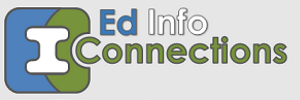Washington Post reporter joins the discussion Rick Hess recently opined on about the achievement gap and whether gifted and talented students should be shortchanged in favor of the closing the achievement gap. Mathews rightly points out some fundamental differences between education and business and that we make different types of decisions in these contexts. Mathews also suggests that some of Hess’ argument belongs to another era in that in this age we need to meet the needs of all children.
I see good aspects to both arguments, but neither addresses what I believe to be an important part of schooling today: that educators are already making the decisions about how to balance the interests of those most at need and those with greatest advantage (and political voice) today and doing it with limited information on the impacts of their choices. While few would admit it, educators are today balancing the needs of these two types of groups in their curricular designs and school arrangements. And, while few want to discuss it, they are making choices based on limited resources. As both Hess and Mathews likely realize, by discussing one constituency versus the other in the public debate they are reminding those responsible for educational funding decisions from national to local offices about needs that should be met.
We are all in the dark ages
In a sense, all of us – Hess, Mathews, me, federal and local decision makers – are living in the dark ages. What is needed is more and better information to help analyze decisions balancing these priorities.
We do live in a world of limited public resources, including for education. And, there is no evidence that the challenges of education in terms of various gaps between students and their potential, however we define it, is any less than it has been in times past. However, the ways many decisions about education are made today are largely intuitive and without the benefit of objective and reliable data. If educators had access to data about returns on their decisions in enough detail to allow them to make more informed decisions, those decisions would likely be better and more open to public analysis. Data and information are the sunshine that stakeholders need to be able to evaluate their choices.
Some might call this type of analysis a return on investment (ROI), but that might risk making education seem like a business and attract polarizing sentiments.
The data is coming
While it will be difficult, very difficult and costly, for educational systems to develop the kinds of information infrastructures that are needed to support the kind of analysis needed to balance different educational constituent needs, more and better data is coming. This administration has made quality data a high priority as its predecessor did. And, there are new leading voices in congress calling for more and better data. Consider this comment by Representative Duncan Hunter (R-CA):
The problem becomes how do you enforce standards and good education. If there is no stick for the federal government to use, and I don’t think that there should be, then how to you ensure that the job’s getting done? The answer is data. There has to be sunshine and there has to be the ability to compare apples to apples for every stakeholder from the local level going to the highest level. So the federal government can compare apples to apples but more importantly so teachers can and parents can and every stakeholder in that municipality or school district can look and see very easily what’s going on.
And this one by Senator Michael Bennett (D-CO):
What is not well understood is that we have a big systems problem in our delivery model of K-12 education. … When I became superintendent our HR department was essentially staffed by ex school administrators who for whatever reason couldn’t make it in their school and were in the HR department busily not returning people’s phone calls and losing people’s paperwork and had no idea how to do HR. That’s a systems problem that matters if you care about getting the most talented teachers into your school district and the most diverse class of teachers into your school district. … I use that as an example, but it could be about anything else right down to the most important thing, which is of course teaching and learning. You can’t do this systems work unless you have data; unless your rigorous about it and unless you’re measuring what you are trying to do on all kinds of parts of the system.
Both made these statements at a forum held recently by the Data Quality Campaign and College Summit that called for the linking of K-12 and Post-secondary data systems. This linking will open up new possibilities for analyzing and understanding educational processes. As with most educational data efforts, the quality will be inconsistent and the costs great. It will not yet provide much of the kind of detailed information needed to evaluate local school system investments for different types of populations. But, in time, that too will come. Decades from now educators and analysts will come to realize that in terms of practices of educational management, we were all in the dark ages.

Leave a Reply